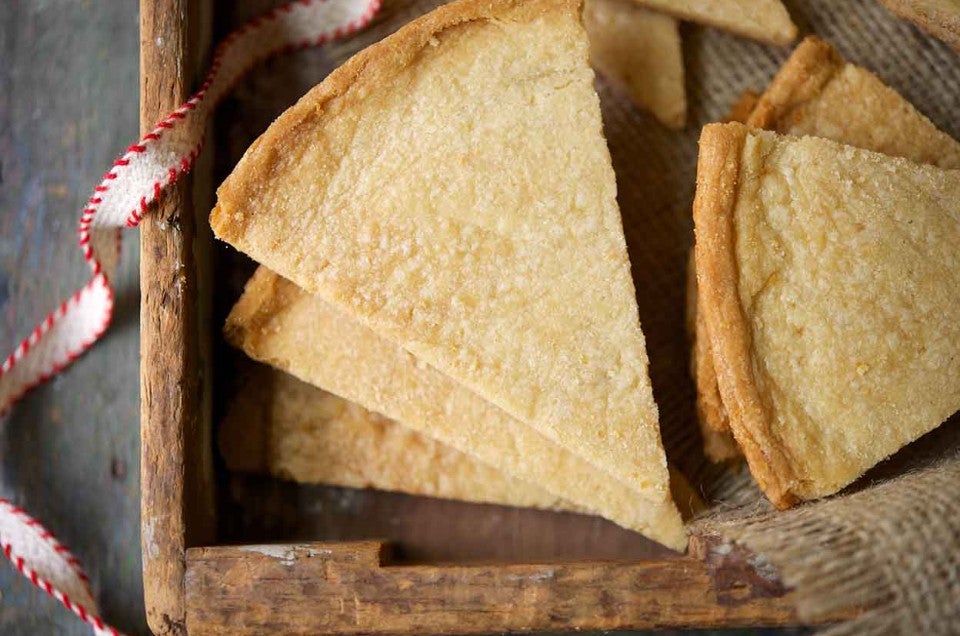


Sunday, December 21, 2008, 7:04 a.m.
What’s the significance of that date and time? Beginning of winter, right? Which sounds a bit discouraging if you live up North, where winter means 5 or 6 months of heavy coats, slick roads, and horrendous heating bills.
But Dec. 21 is also the winter solstice: the shortest day of the year. Which means—hallelujah!—on December 22, the days start getting longer. On the very first day of winter, we start the long journey back to summer.
Many cultures mark the winter solstice with celebrations and bonfires. Shortbread, that buttery confection we associate so heavily with Scotland, is one of the season’s traditional foods in that country. Baked in large rounds with notched edges to resemble the sun, it’s served both on the day of the solstice, as well as on Hogmanay (New Year’s Eve), and New Year’s Day.
And why not? Butter, sugar, and flour produce a tender/crumbly cookie that’s ridiculously easy to make. Just work the ingredients together, press into a couple of round cake pans, bake, and cut into wedges. I add non-traditional vanilla, and the merest touch of almond because those two flavors shout COOKIE to me. But feel free to add your own special flavor—how about butter-rum, or coconut?
And speaking of non-traditional, shortbread is a great base for a drizzle of melted chocolate or caramel; a shower of snowy pearl sugar, or even a dollop of apricot or raspberry jam, applied just before serving. Or all of the above. If you’re looking for an easy way to brighten the holiday cookie platter, you’ve found it.
Although we usually use unsalted butter in the test kitchen, for shortbread we use salted. Why? Because with no liquid in the recipe, adding salt is problematic; it doesn't disperse well and adds a slightly gritty texture. Salted butter is a good solution.
First, beat together the butter, sugar, and vanilla; a touch of almond extract is welcome, too.
Add the flour, mixing to make a cohesive dough. The mixture is quite dry; it'll take awhile to come together. If it remains crumbly, dribble in up to a tablespoon of water to make it cohesive.
Next, divide the dough in half. A scale makes this easy.
See? Exactly half of the dough goes in each pan.
Pat and press the dough to the edges of the pan with your fingers.
To flatten and smooth, cover with plastic wrap and roll with a pastry roller. Or press with the bottom of a measuring cup.
Remove the plastic wrap, and prick the dough all over with a fork; this will prevent it from bubbling as it bakes.
Bake the shortbread till it's a light golden brown, and a tiny bit darker brown around the edges.
Loosen the edges of the shortbread...
...and immediately turn it out onto a clean work surface. Notice how much browner the bottom is than the top. Cut into wedges with a long knife...
...or with a rolling pizza wheel. Be sure to do this while the shortbread is warm; as it cools it becomes crisp, and cutting crumb-free, intact wedges becomes more of a challenge.
Here they are, ready to enjoy. Or...
...decorate and enjoy. We've drizzled these with caramel sauce; fudge sauce topped with diced nuts; and jam topped with shortbread crumbs.
Read, rate, and review (please!) our recipe for Shortbread.

